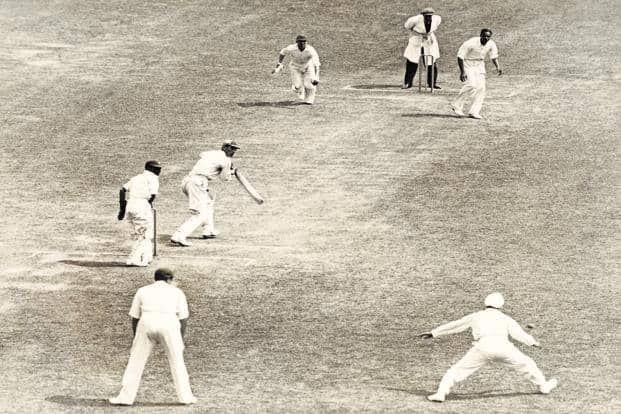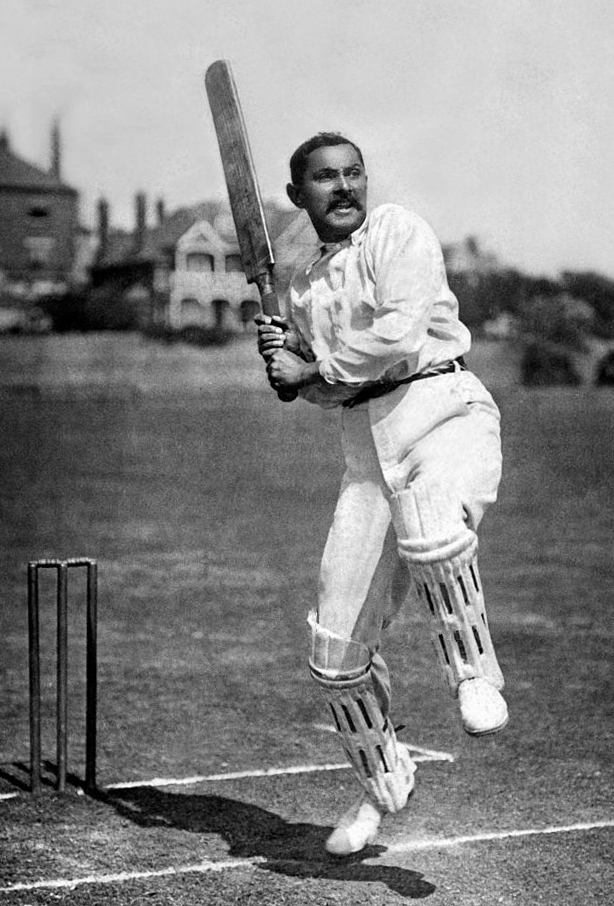
India playing their first cricket match in 1932
It is considered India’s biggest religion and has been a part of our culture for decades. While it continues to hold a special place in the hearts of millions of Indians, how and why did cricket become so popular?
Cricket was imported to India by the British during the colonial period. Officials of the East India Company were very fond of the gentleman’s game and would often play the sport on the subcontinent, much to the curiosity of Indians. While it had a remarkable resemblance to the indigenous game “Gilli Danda”, some of the rules were quite confusing and difficult to follow. With a lot of the royalty in India picking up the sport as a way to mingle with the British, the popularity of the game rose and eventually led to the inception of the first cricket club in India, the Calcutta Cricket Club, in 1792. By the late 1800s, cricket saw exponential growth both in terms of quality and popularity and the credit goes to two of the most influential cricketing names of the time, Sir Ranjitsinhji Vibhaji Jadeja, and KS Duleepsinhji, whose names were immortalized with the introduction of the Ranji Trophy and Duleep Trophy – two major first-class tournaments in India. It was only in 1928 that the official cricket board, the Board for Control of Cricket in India (BCCI) was established and was granted the official test match status by ICC by admitting India as a full member. 1932 was a landmark year as India played its first official test match against England at Lord’s. The historic match had C.K.Nayudu leading the Indian side, in which they suffered a defeat by 158 runs.

Sir Ranjitsinhji Vibhaji Jadeja in action
Rise of the Gentleman’s Game:
Having played cricket for nearly 20 years, India reached a historic milestone in the year 1952, recording their first cricket victory, and coincidentally against the mighty English team in a test series that took place in Chennai. This victory had a ripple effect as India won their first test series against their neighbour, Pakistan.
The early 1970s saw India with a fairly decent test squad, with one man who possessed incredible defence calibre and stood up to the mighty English, Australian, and West Indian bowling attack in the squad. Sunil Gavaskar, who was aptly nicknamed The Little Master, rose to fame and became one of India’s first cricketing superstars due to his impressive displays on the pitch. With multiple series wins against some of the greatest teams of the time, the 70s was a good year for cricket in India as not only did the team enjoy great success, but with the rise of stardom, more people began to pick up cricket recreationally. However, a landmark event that really springboarded the popularity of the game was the victory in the 1983 World Cup.
The same decade saw the advent of One Day International (ODI) cricket, a limited-over format that swore games would be completed in a single day. With the initial games being played for 60 overs, this fast-paced cricket did not suit the Indian players as most of our batters were defensively strong and lacked attacking power. Hence, India suffered in the first two editions of the ODI World Cup. Led by a young Kapil Dev, the Indian team travelled to England on a limited budget but with unlimited talent and hope. Having been knocked out at the group stages in the previous two editions, the young team battled it out in the group stages against a tough Australian side, a difficult West Indian side and a tricky Zimbabwean side. Winning 4 out of the 6 games, India swiftly progressed to the semi-finals where they beat England and finally conquered the world with a win against the toughest side of the tournament and defending champions, West Indies.
This victory not only announced to the world of India’s arrival on the global sporting stage but also saw the breakout of a revolution in the country, as it instilled hope and inspiration in the minds of millions that Indians could achieve anything, especially in cricket, leading to a huge surge in popularity of the sport.

Still from India’s first World Cup Triumph in 1983
Another reason the popularity of cricket grew tenfold was due to the ease of access to playing the game. Necessity is the mother of all inventions, and as cricket became a part of popular culture, cheaper bats were made available, leather balls made way for economic rubber balls and gates, fences, walls and stones became makeshift wickets, leading to the beloved game of gully cricket. People often underestimate the importance of gully cricket, however, it is probably one of the most important evolutions of the game that led to making the sport popular in India. The ability to play cricket in any space or even lack of it led to a cricketing culture that has been ever-evolving and growing.
The growth of gully cricket coupled with Indians’ obsession to discuss and analyze was another catalyst to the growth of cricket in the country. While the majority of conversations among people would revolve around politics, cricket gave an additional topic to be discussed and that coupled with intricate statistics and details in the game became a topic of interest to many Indians to obsess over. As the game got popular, live telecasting of matches began on the radio and eventually on television around the same time, every household in the country started to get a television. With television being able to visually support the game with stats and graphics, cricket became a topic to obsess over at home, over the dinner table as well as in various classes of society.

Children playing ‘gully cricket’ on the streets
Evolution of the gentleman’s game:
Cricket as a sport went through multiple evolutions and faced a changing atmosphere, which piqued the interest of the audience and catered to the ever-changing demographic of the Indian population. The instruction of 60 over ODI matches was a new way to ensure audiences who got busier in life could dedicate themselves to the game only for one day. The introduction of colour uniforms in a new 50-over format coupled with the growth of colour television sets brought in a younger audience during the late 90s and early 2000s.
As the 16th edition of IPL takes place, credit has to be given to the evolution of the T20 format for cricket and the creation of IPL. As attention spans of audiences shrink, the introduction of 20 over cricket riveted fans to the game, who now needed to only spare two or three hours per game as opposed to a whole day in the past. While cricket was largely played between nations, a franchise-based league was lacking, that gap was filled with the Indian Premier League, an annual event that has successfully entertained and thrilled audiences and has also been a great source of revenue for the athletes taking part in the games.
The pouring success has attracted capital, brands have jumped in with endorsements and the players have become stars. This has also turned cricket into a viable career option for budding young aspirants. Today, a youngster’s goal has slowly changed from representing the nation to getting picked up in an auction by an IPL team. While the purists do frown upon this mindset, it has indeed played an important role in bringing a lot of success stories to people from very humble backgrounds and making it big in the world of cricket. With cricketers from various backgrounds playing in the same team, there is parity in a society where bridging gaps between social classes is a challenge.
Cricket, while being India’s most popular sport, is certainly gaining global popularity, as more countries begin to start playing the sport. IPL today generates enough revenues and boasts of a following that rivals some big leagues across various sports in the world. With a strong board (BCCI) and a fanatical following, cricket is only here to stay and will always be one step ahead of the other sports when it comes to innovating and making the sport more acceptable to the general public.










